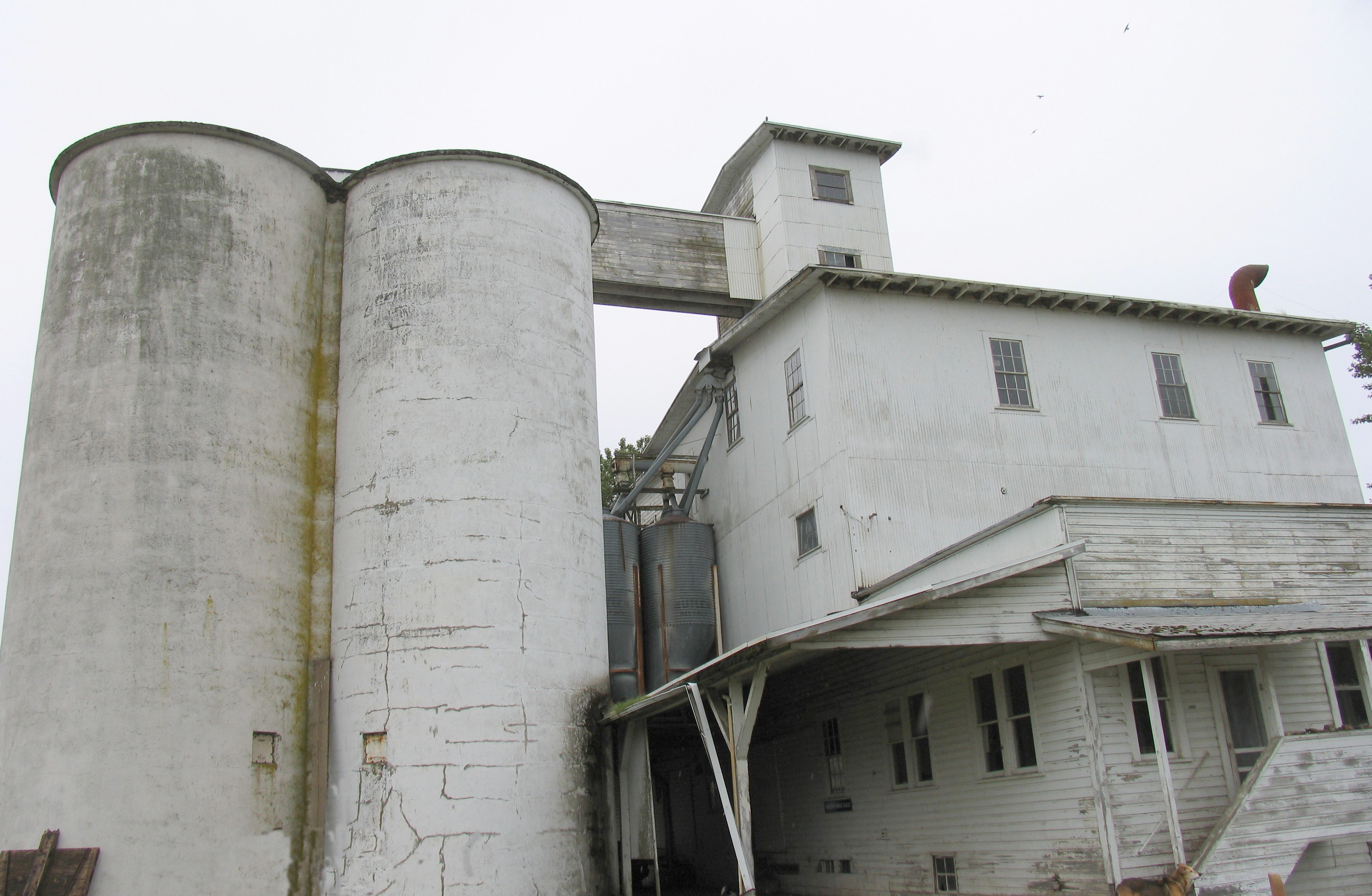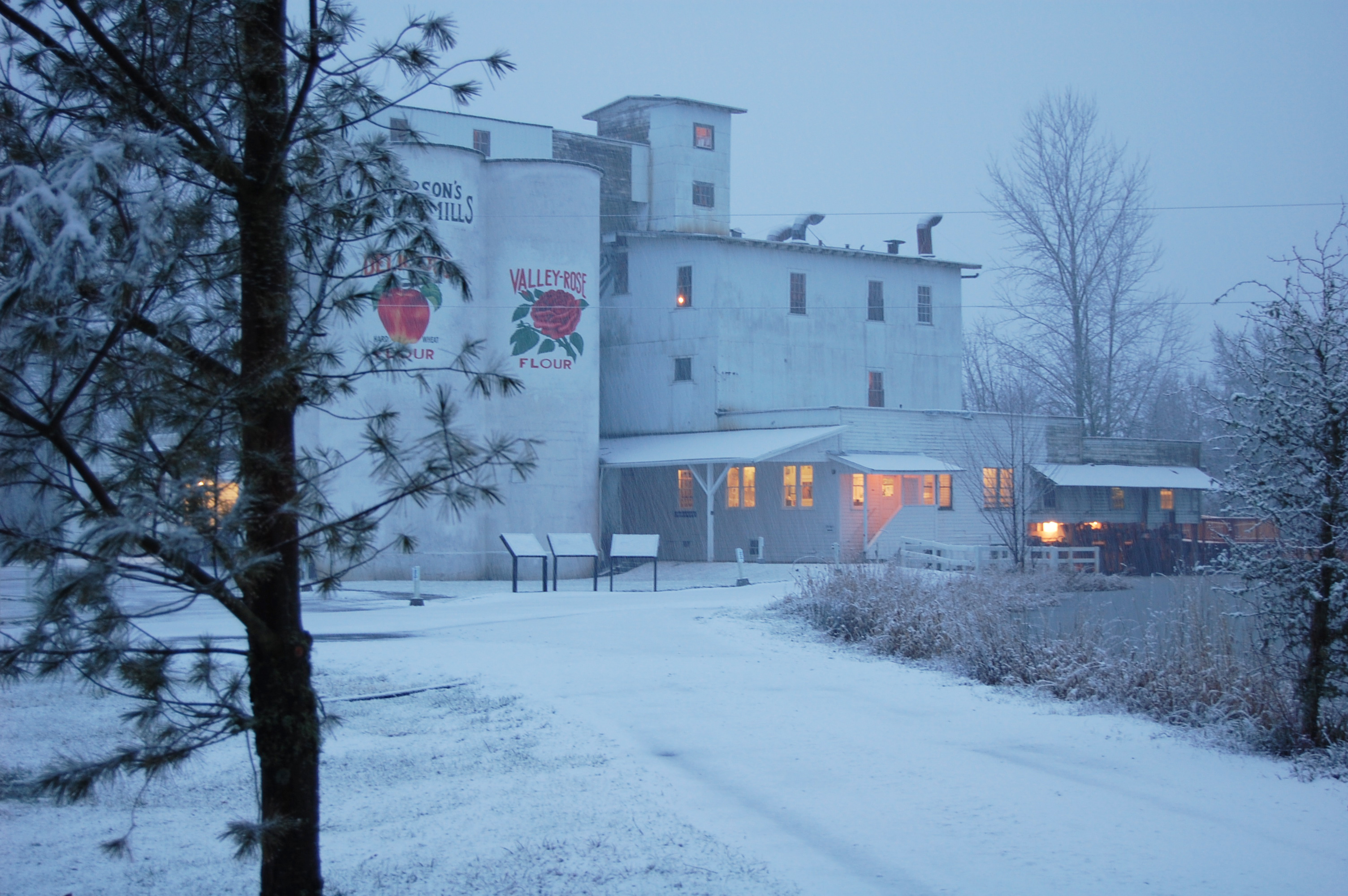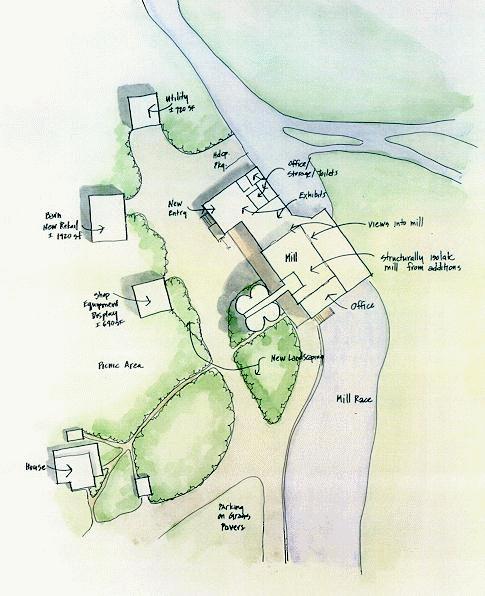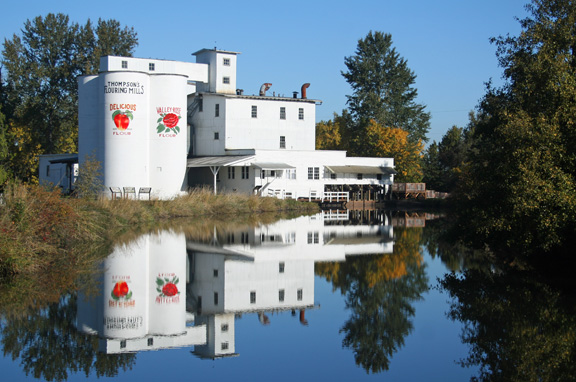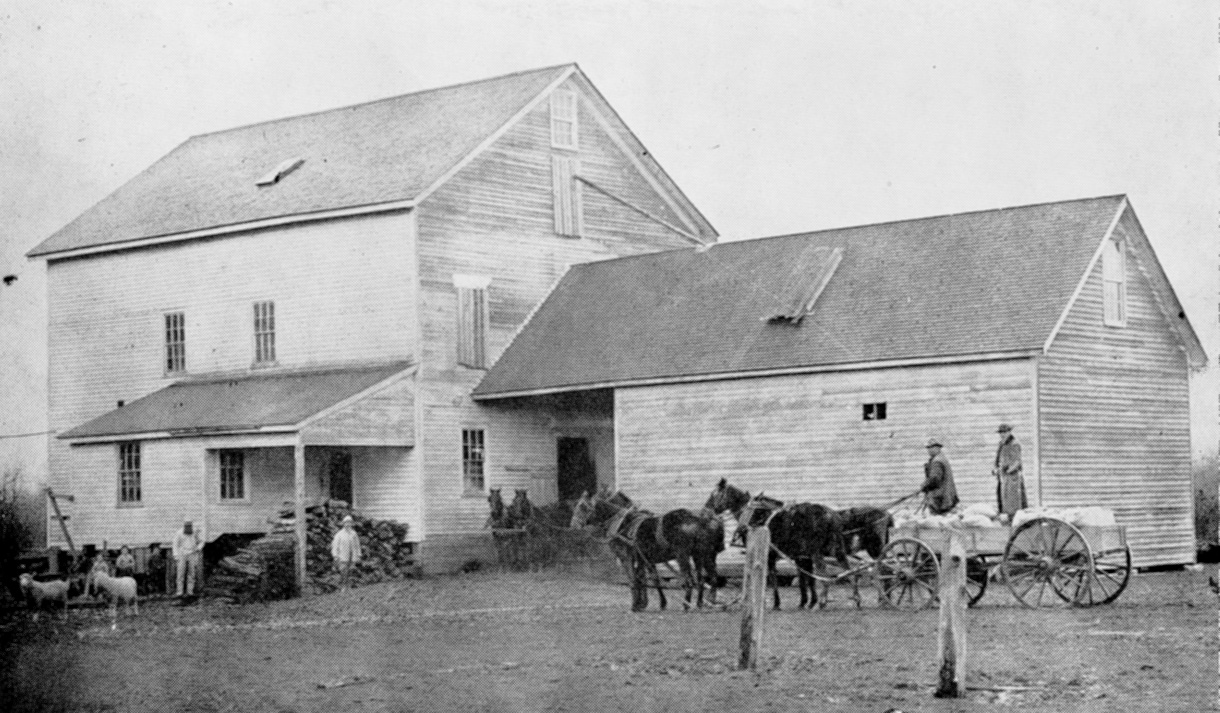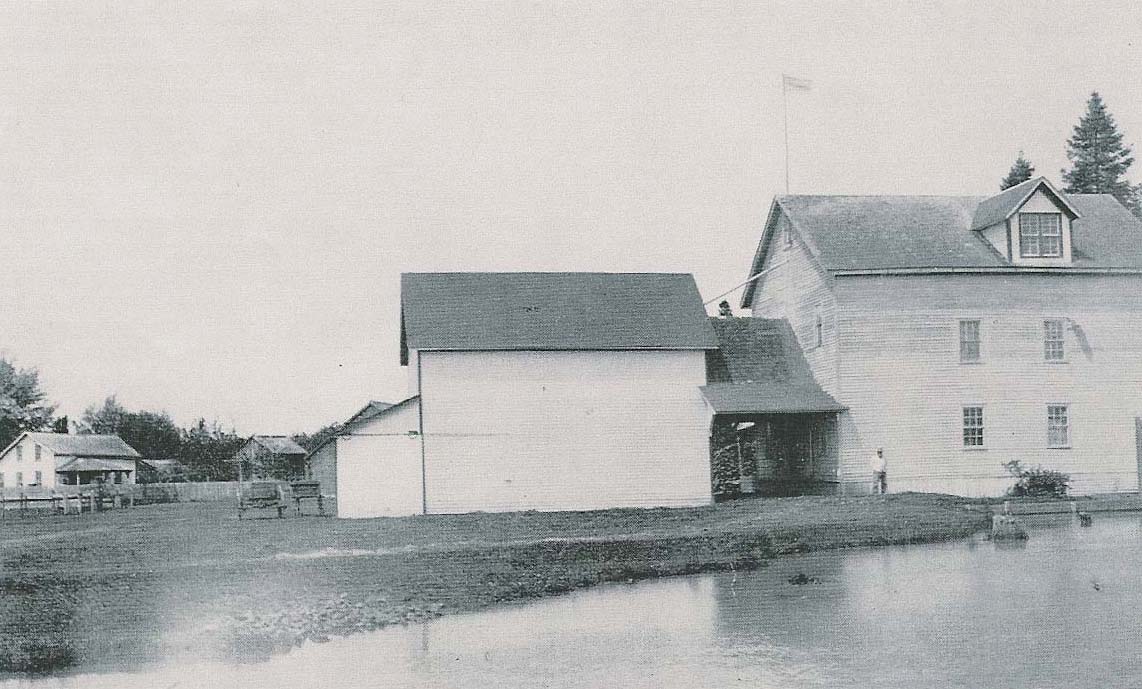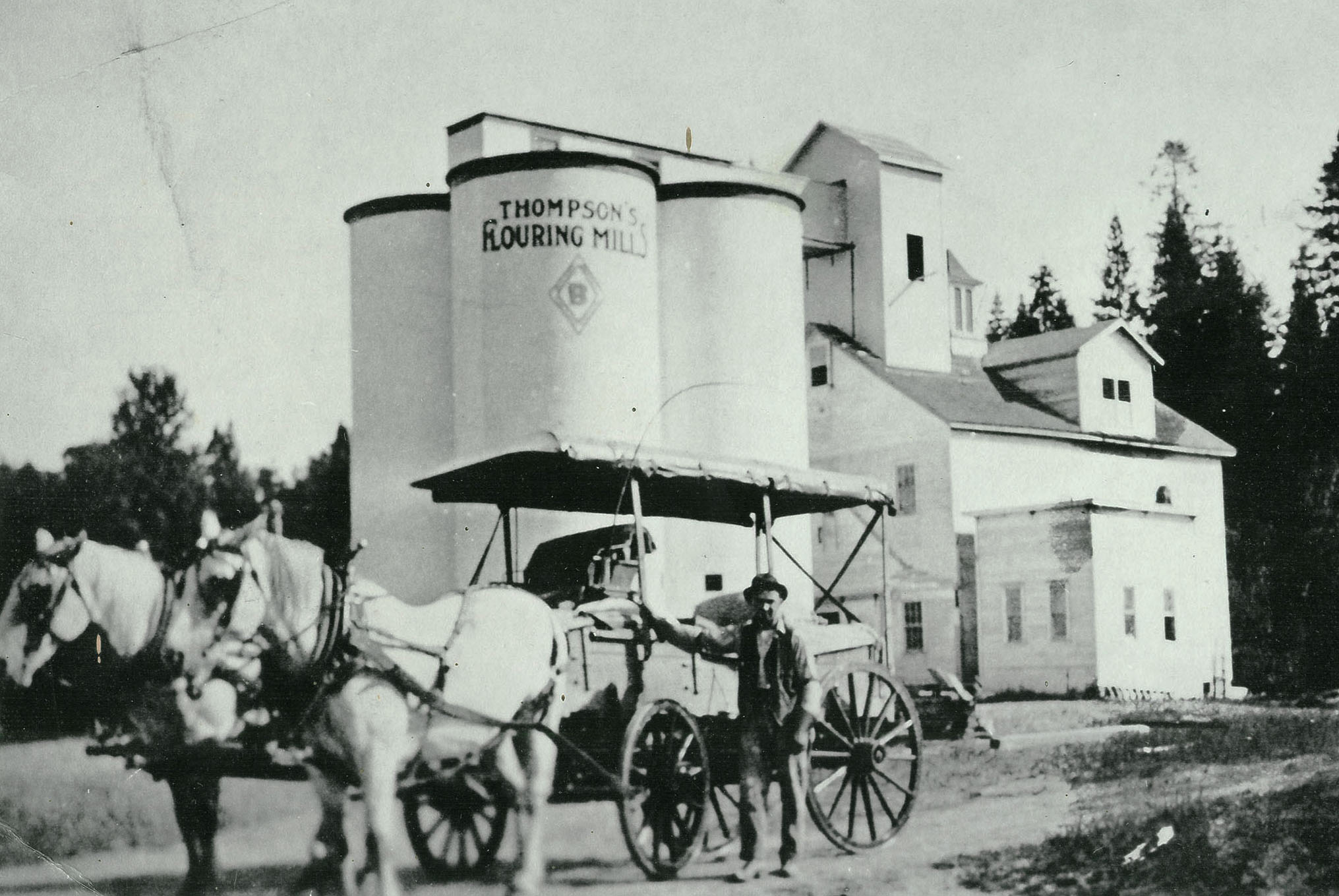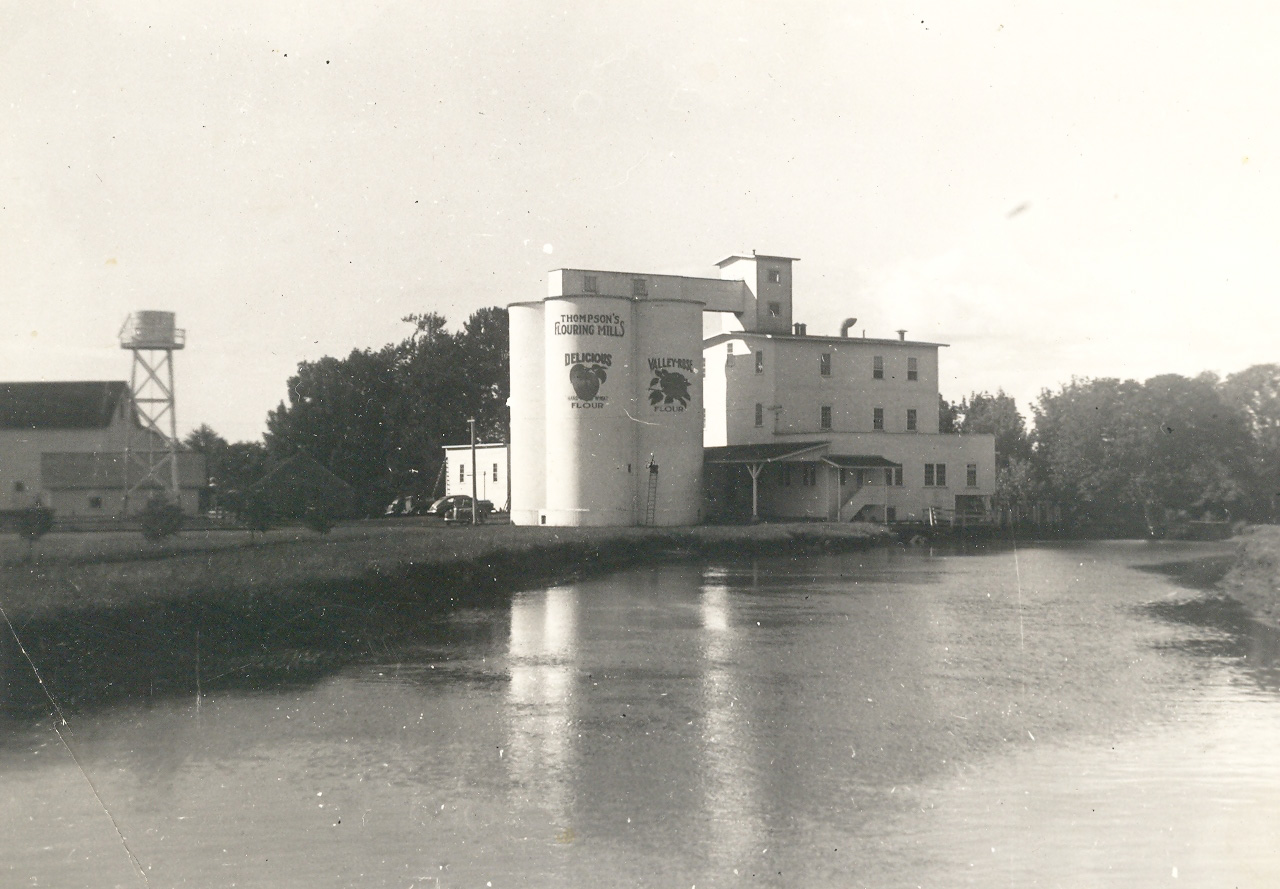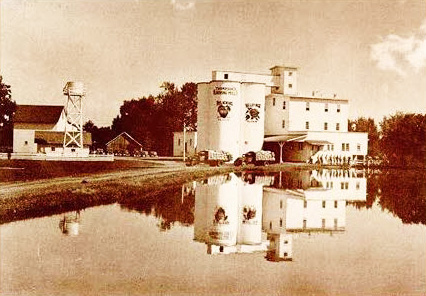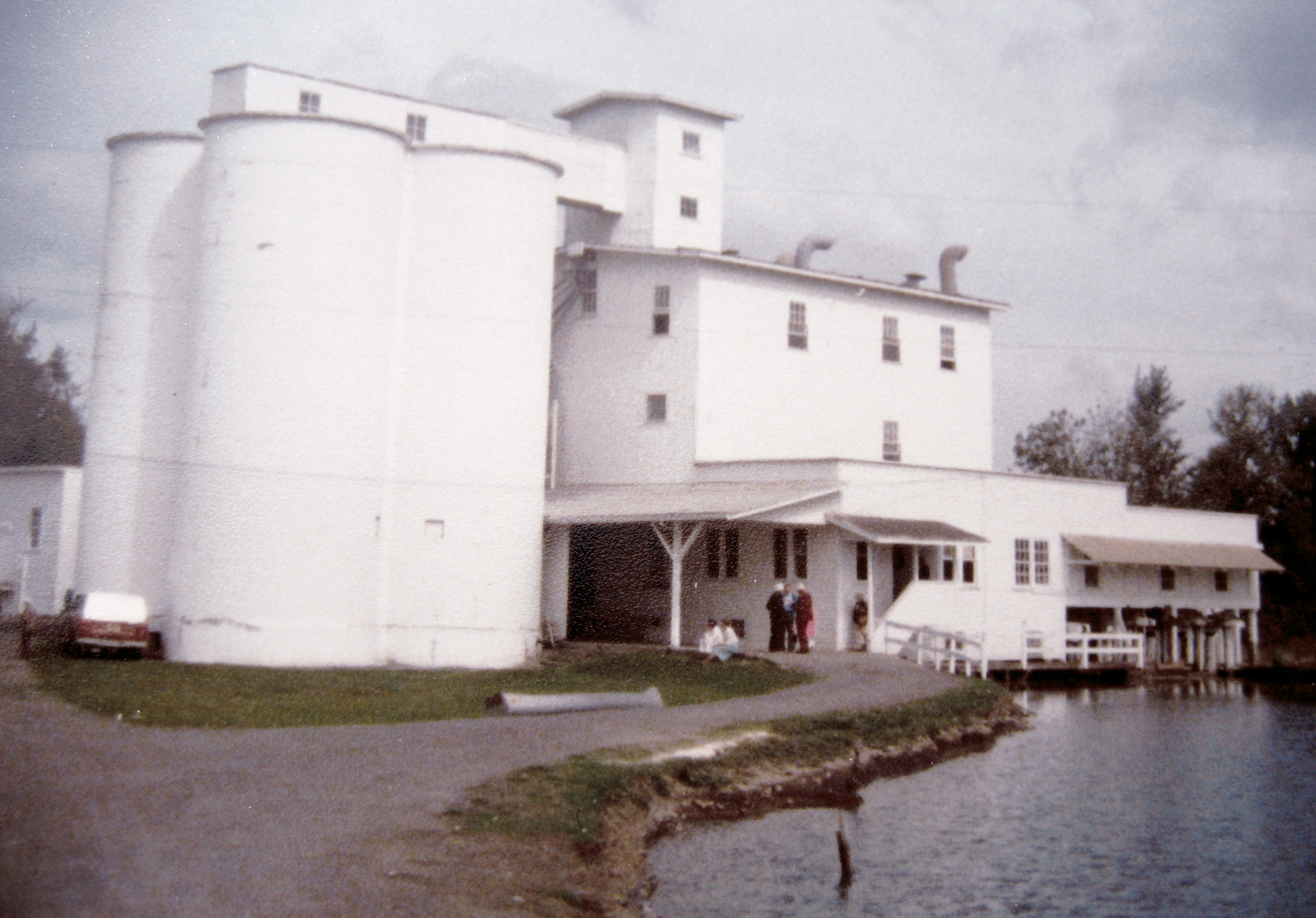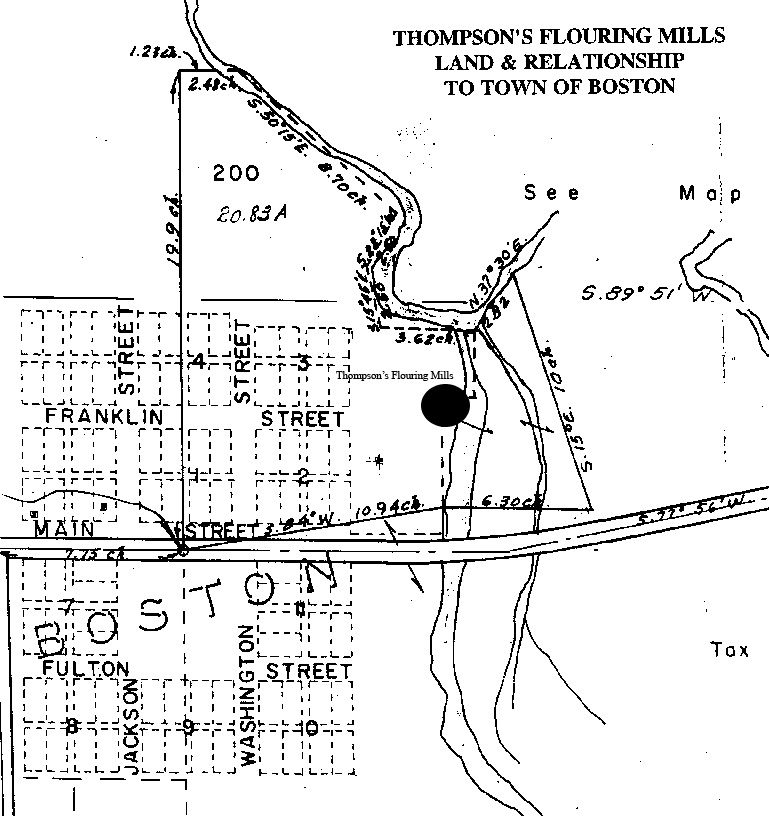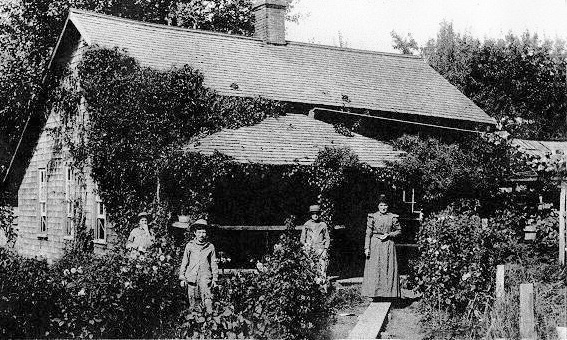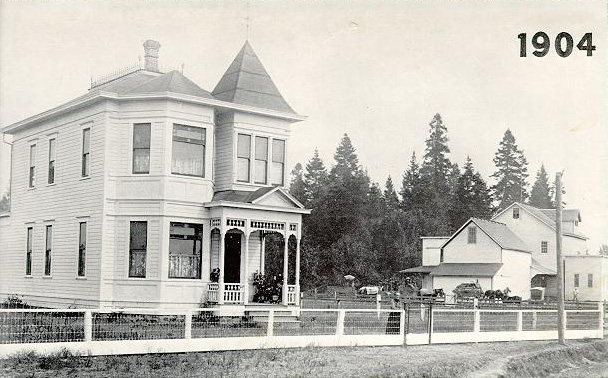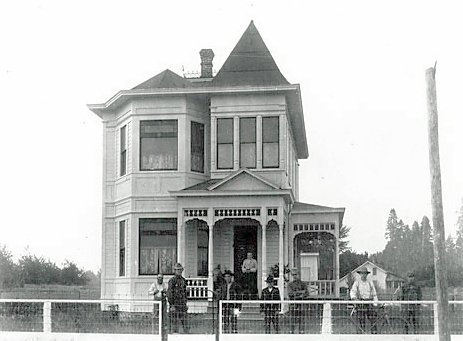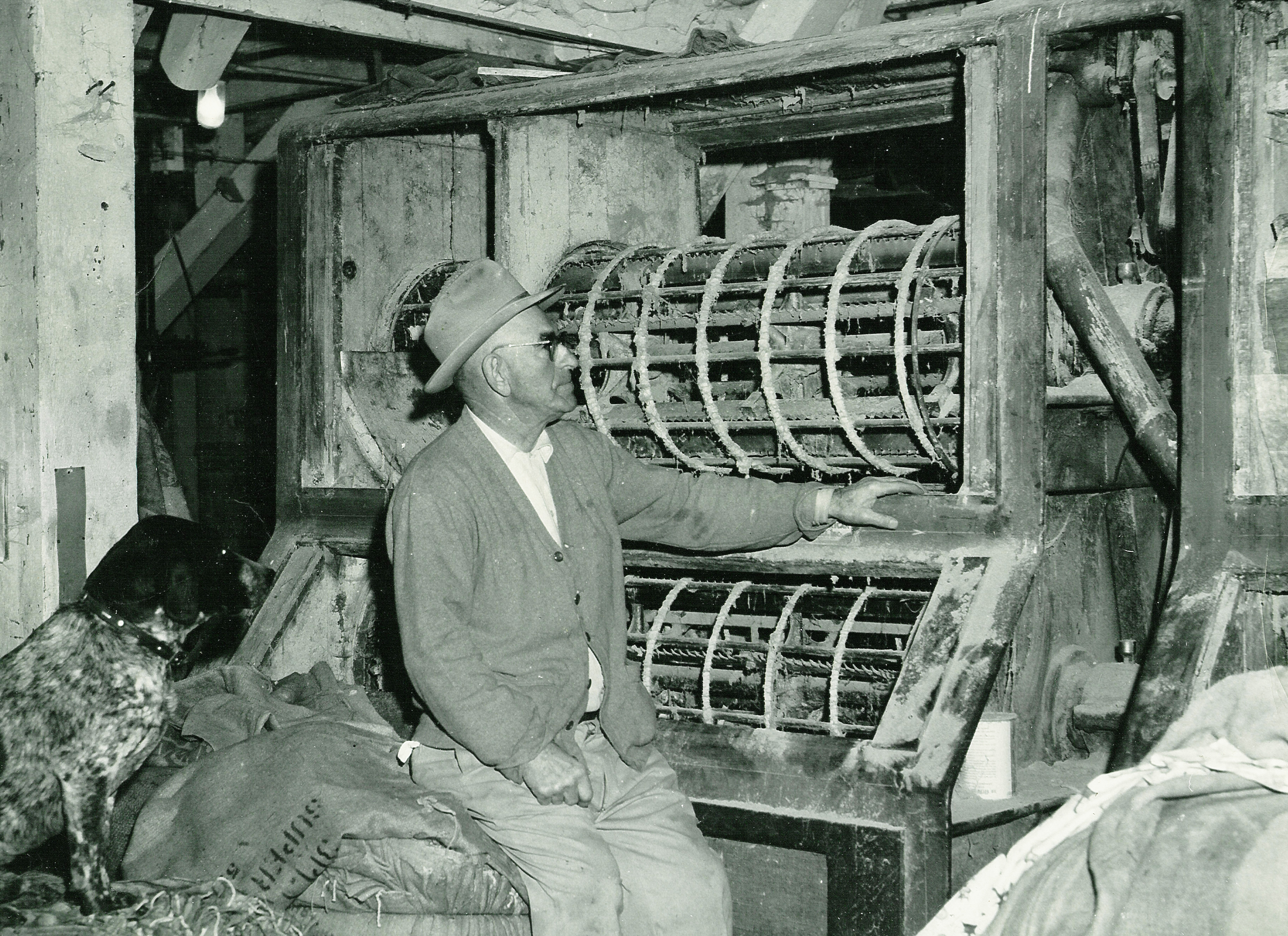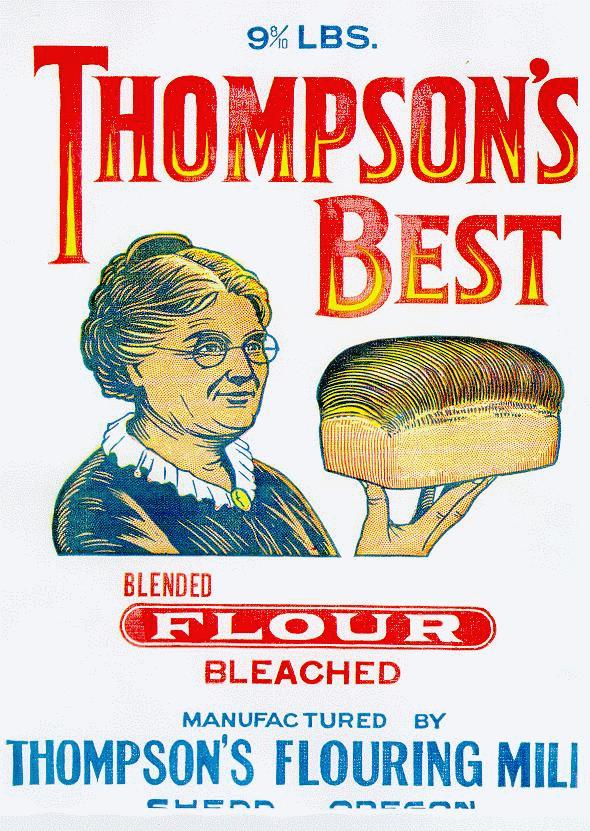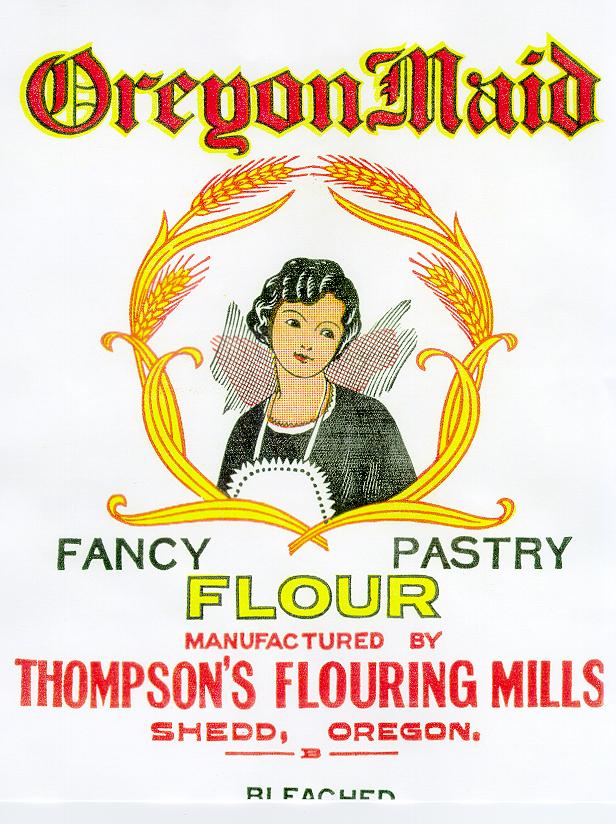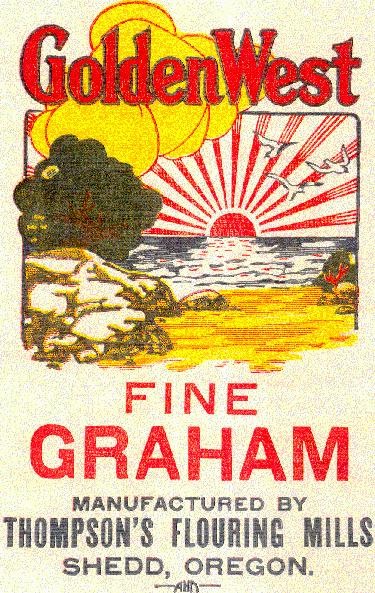Thompson’s Mills, the oldest existing water-powered grain mill in Oregon, hugs the Calapooia River about two miles east of Shedd in Linn County. In 2004, the Oregon Parks and Recreation bought the mill and opened it to the public because "the mill, its associated buildings and water features present OPRD with an excellent opportunity to preserve, protect, and interpret the significant cultural and natural resources for present and future generations."
In 1858, miller R.C. Finley, with partners Philemon Crawford and Alexander Brandon, built the original structure and named it Boston Mills. They sold flour to neighboring farmers and to miners traveling south to the gold fields. The partners channeled the Calapooia’s waterpower with a complex hydro system of three dams, a millrace, headgates, and a flume and turbines. The mill operated solely on energy from its water plant until 1941. The water system is still fully functional.
The town of Boston, located behind the present millkeeper’s house, was platted in 1861. By 1869, it boasted a post office, two general stores, and a blacksmith shop. In 1871, the town disappeared virtually overnight when the Oregon & California Railroad laid track in Shedd. Today, there is no trace of the town. Boston Mills survived by transporting its flour to the railroad station in Shedd. By 1880, the mill was processing oats, corn, and barley, as well as wheat, and selling its flour to conglomerates in Portland.
German immigrants Martin and Sophia Thompson and their six children moved to the mill in 1891. Martin Thompson assumed full ownership six years later. Thompson updated the mill’s equipment, installing steel “roller” mills and increasing quality and production. He renamed the facility Boston Roller Mills.
When Thompson died in 1910, Sohia Thompson and their sons Otto (known as Ott) and Leo inherited the mill and changed its name to Thompson’s Flouring Mills. They packaged and sold flour under the names Valley Rose, Thompson’s Best, and Cream of the Valley. In 1917, Ott Thompson added four 50-foot concrete silos, which allowed the mill to operate all year long by storing hard winter wheat from eastern Oregon. During World War I, the mill operated twenty-four hours a day in order to sell flour to the U.S. Food Administration, which administered famine relief in Europe. By 1940, the mill had switched from processing food for people to producing animal feed. The Thompson family owned the plant until 1974.
In 1986, owners David and Marlene Babits installed a generator and began selling the mill’s waterpower to the Pacific Power and Light Company. The mill was only doing small, specialty-milling jobs and selling waterpower when the Babits sold it in 2004. The generator is still functional but is not in use.
Today, the 20-acre site includes a six-floor, 23,000-square-foot mill, the Queen Anne house, a carriage house, a hay barn, a service bay, and a garage/shop. The mill is open to the public, and state park interpreters show people the grounds, the water works, and the still-functioning milling equipment inside the main building.
-
![Sacking feed at Thompson's Mills, 1978.]()
Thompsons Mills, sacking feed, 1978.
Sacking feed at Thompson's Mills, 1978. Courtesy Oregon Parks and Recreation Dept.
-
![Thompson's Mills.]()
Thompsons Mills, DONE ITS-B4-3.
Thompson's Mills. Courtesy Oregon Parks and Recreation Dept., DONE ITS-B4-3
-
![Thompson's Mills, Jan. 2009.]()
Thompsons Mills, Jan 2009.
Thompson's Mills, Jan. 2009. Photo Doug Crispin, courtesy Oregon Parks and Recreation Dept.
-
![Thompson's Mills site design.]()
Thompsons Mills site concept.
Thompson's Mills site design. Courtesy Boston Mill Society
-
![Thompson's Mills.]()
Thompsons Mill, color.
Thompson's Mills. Photo Ellen Hamill, courtesy Boston Mill Society
-
![Boston Mills, about 1892.]()
Boston Mills, ca 1892.
Boston Mills, about 1892. Courtesy Oregon Parks and Recreation Dept.
-
![Thompsons Mill with Simmons' house background left, 1900.]()
Thompsons Mills, 1900.
Thompsons Mill with Simmons' house background left, 1900. Courtesy Oregon Parks and Recreation Dept.
-
![Thompsons Mills, 1917.]()
Thompsons Mills, 1917.
Thompsons Mills, 1917. Courtesy Oregon Parks and Recreation Dept.
-
![Thompsons Mills, 1940.]()
Thompsons Mills, 1940.
Thompsons Mills, 1940. Courtesy Oregon Parks and Recreation Dept.
-
![Thompson's Mills, about 1941.]()
Thompsons Mills, ca 1941.
Thompson's Mills, about 1941. Courtesy Boston Mill Society
-
![Thompsons Mills, 1970s.]()
Thompsons Mills, exterior, 1970s.
Thompsons Mills, 1970s. Courtesy Oregon Parks and Recreation Dept.
-
![Relationship of mills to Boston town plat.]()
Boston townsite map .
Relationship of mills to Boston town plat. Courtesy Boston Mill Society
-
![Members of the Thompson Family outside original house built about 1863.]()
Thompsons Mills, early house.
Members of the Thompson Family outside original house built about 1863. Courtesy Boston Mill Society
-
![Martin Thompson built this house in 1904. Sophia at fence, Martin at mill.]()
Thompson House, 1904.
Martin Thompson built this house in 1904. Sophia at fence, Martin at mill. Courtesy Boston Mill Society
-
![1904 Thompson house.]()
Thompson house, DONE LM-2.
1904 Thompson house. Courtesy Oregon Parks and Recreation Dept., DONE LM-2
-
![Ott Thompson with Midget Marvel, 1960s or 1970s.]()
Thompsons Mills, Ott Thompson with Midget Marvel.
Ott Thompson with Midget Marvel, 1960s or 1970s. Courtesy Oregon Parks and Recreation Dept.
-
![Thompson's Flouring Mills sack design.]()
Thompsons Best flour sack design.
Thompson's Flouring Mills sack design. Courtesy Boston Mill Society
-
![Thompson's Flouring Mills sack design.]()
Image Title.
Thompson's Flouring Mills sack design. Courtesy Boston Mill Society
-
![Thompson's Flouring Mills sack design.]()
Golden West flour sack design.
Thompson's Flouring Mills sack design. Courtesy Boston Mill Society
Further Reading
Meissner, Daniel J. "Theodore B. Wilcox: Captain of Industry and Magnate of the China Flour Trade, 1884-1918." Oregon Historical Quarterly (Winter 2003).
Thompson's Mills State Heritage Site. http://www.oregonstateparks.org/park_256.php.


